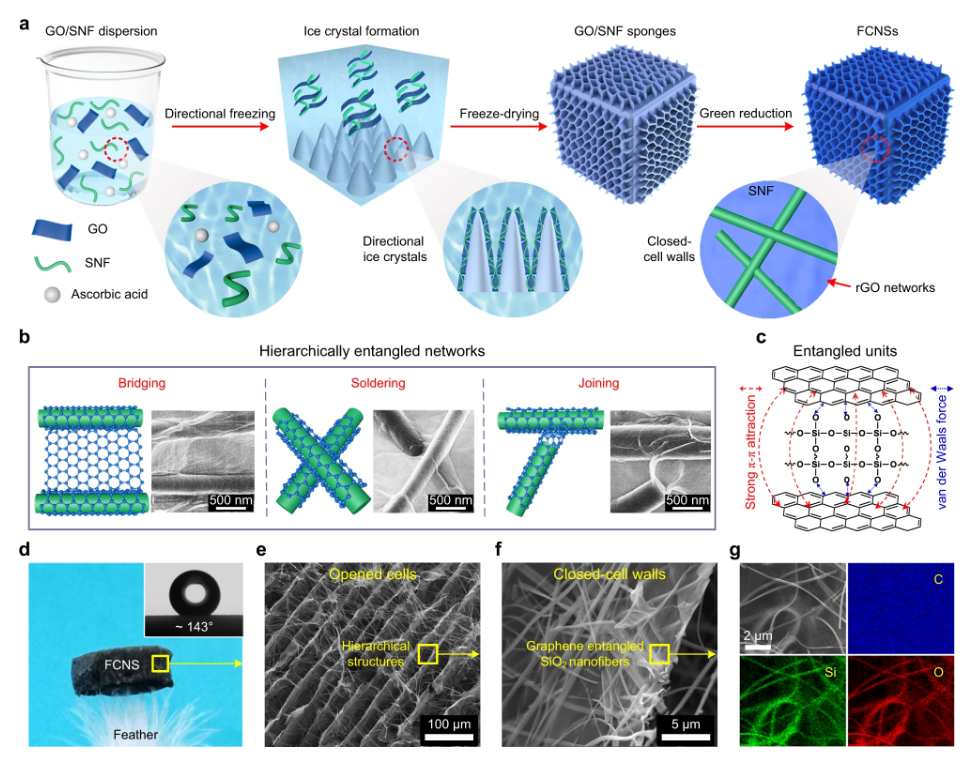Traffic noise pollution has posed a huge burden to the global economy, ecological environment and human health. However, most present traffic noise reduction materials suffer from a narrow absorbing band, large weight and poor temperature resistance. Recently, researchers demonstrate a facile strategy to create flexible ceramic nanofibrous sponges (FCNSs) with hierarchically entangled graphene networks, which integrate unique hierarchical structures of opened cells, closed-cell walls and entangled networks. Under the precondition of independent of chemical crosslinking, high enhancement in buckling and compression performances of FCNSs is achieved by forming hierarchically entangled structures in all three-dimensional space. Moreover, the FCNSs show enhanced broadband noise absorption performance (noise reduction coefficient of 0.56 in 63–6300 Hz) and lightweight feature (9.3 mg cm–3), together with robust temperature-invariant stability from –100 to 500 °C. This strategy paves the way for the design of advanced fibrous materials for highly efficient noise absorption.
Figure1. Structure design and hierarchical architectures of FCNSs. @Dingding Zong, et al. Nature Communications
Source from: Zong D, Cao L, Yin X, et al. Flexible ceramic nanofibrous sponges with hierarchically entangled graphene networks enable noise absorption. Nature Communications 2021; 12: 6599. doi: 10.1038/s41467-021-26890-9. |




